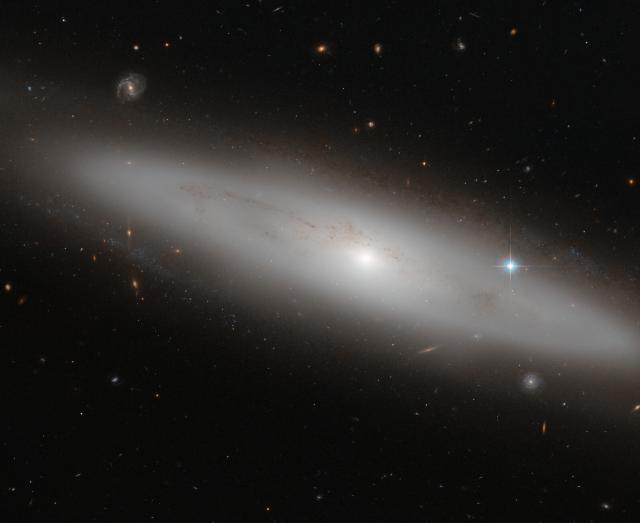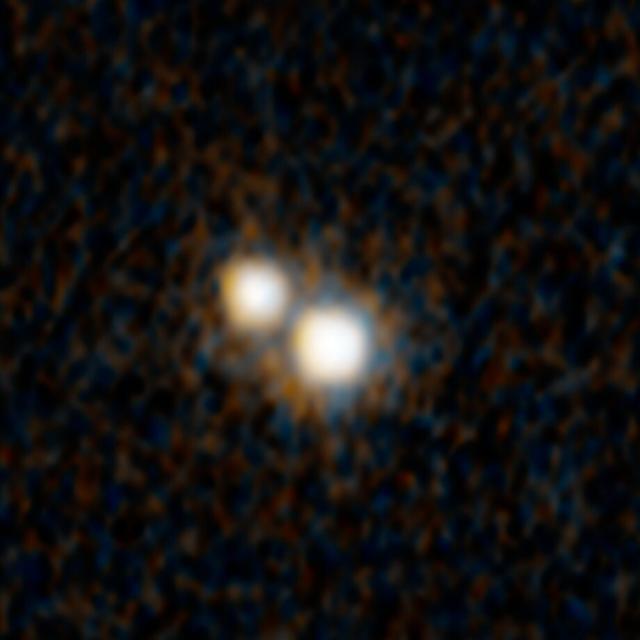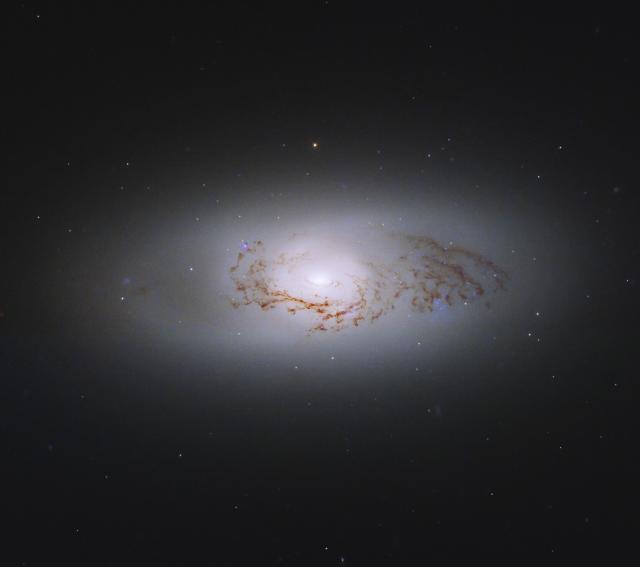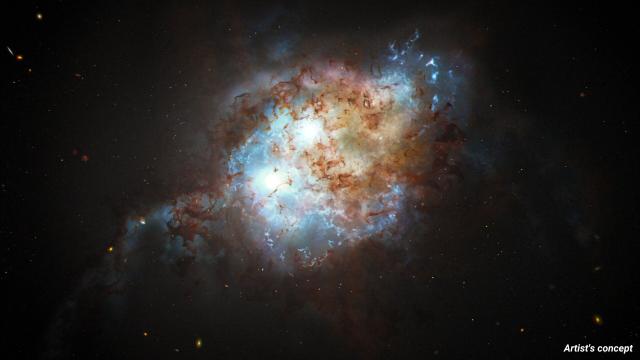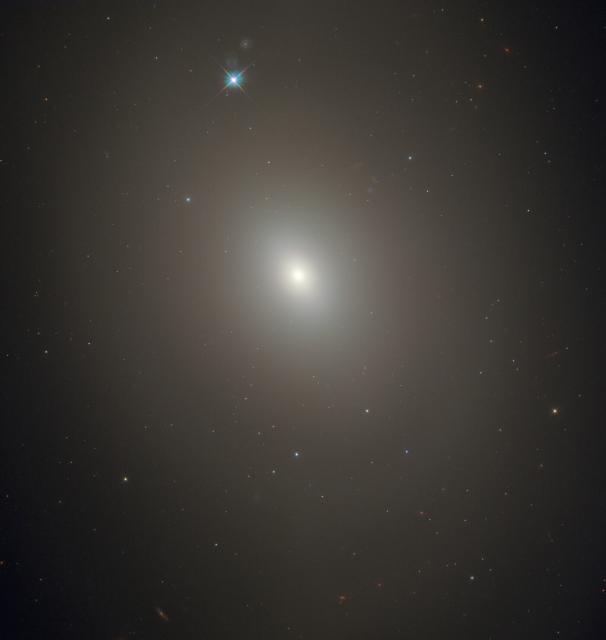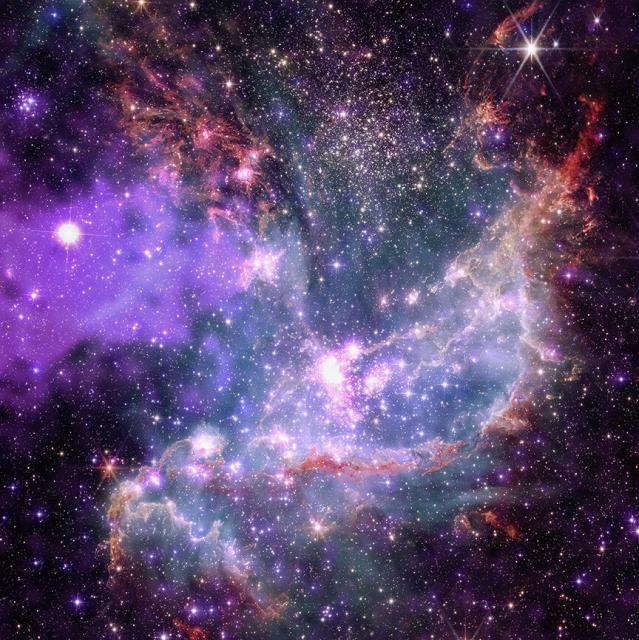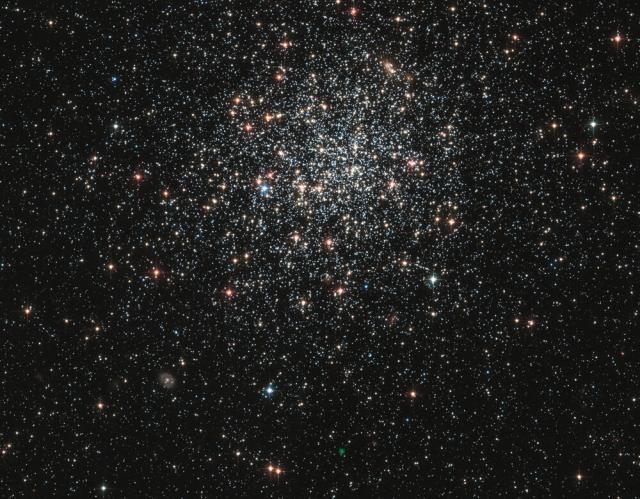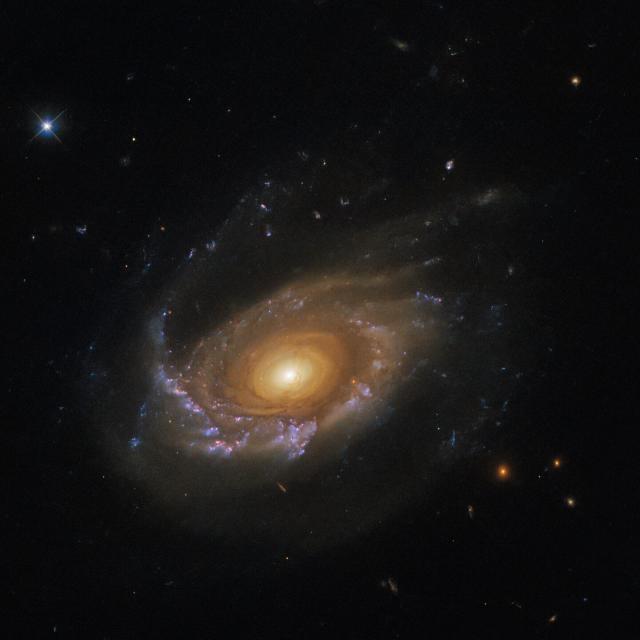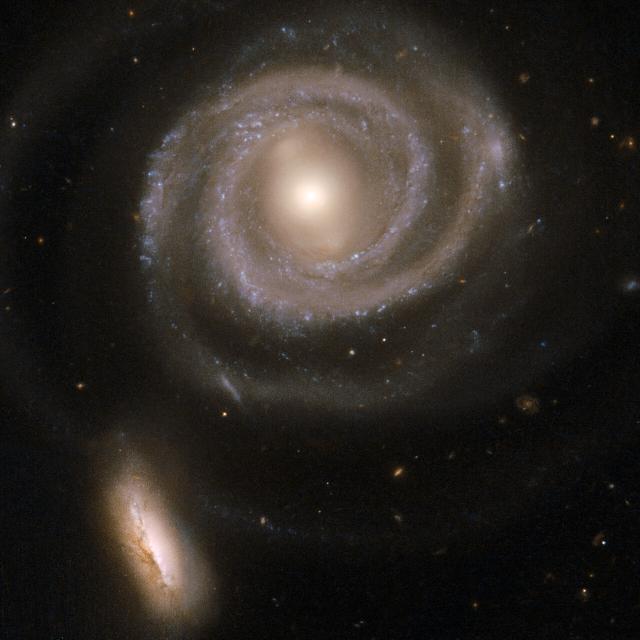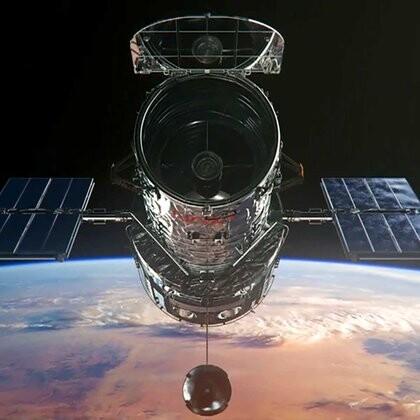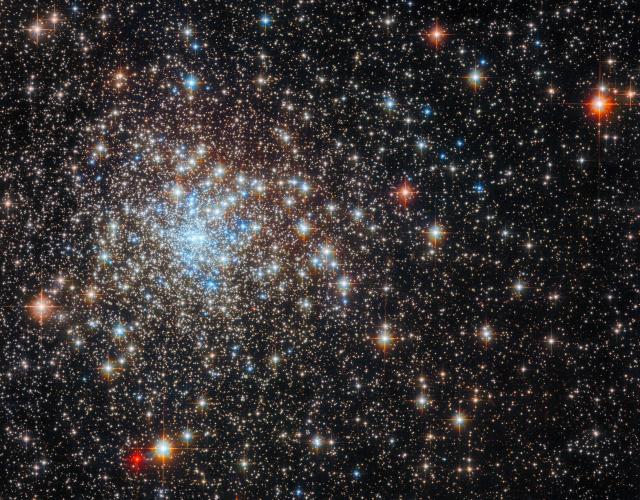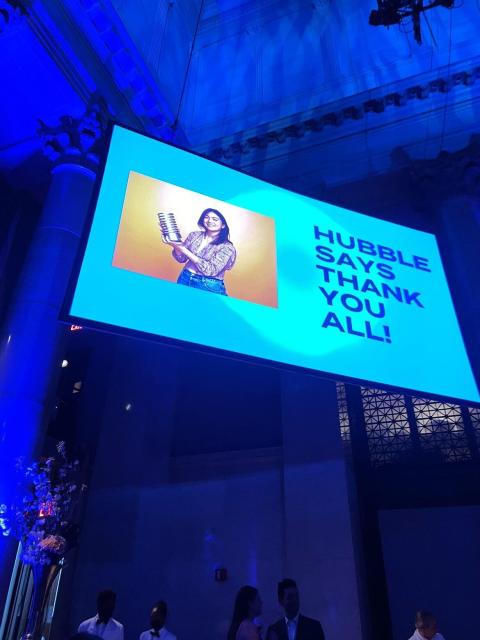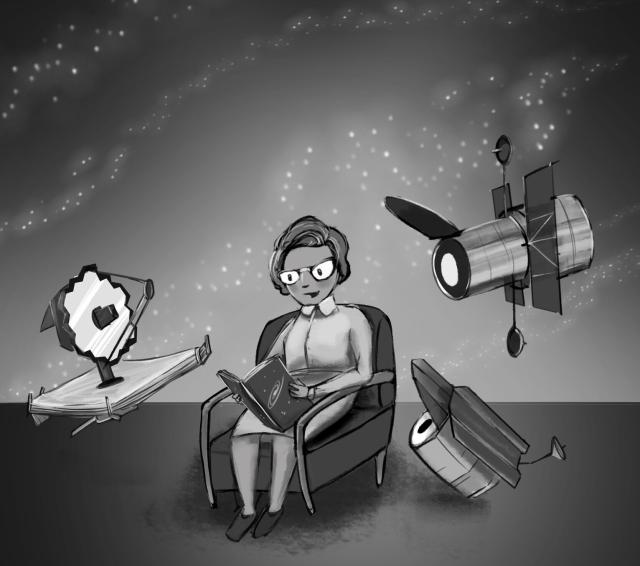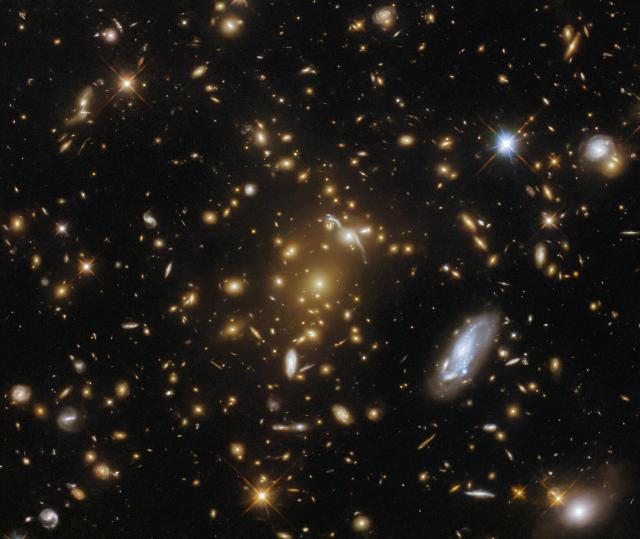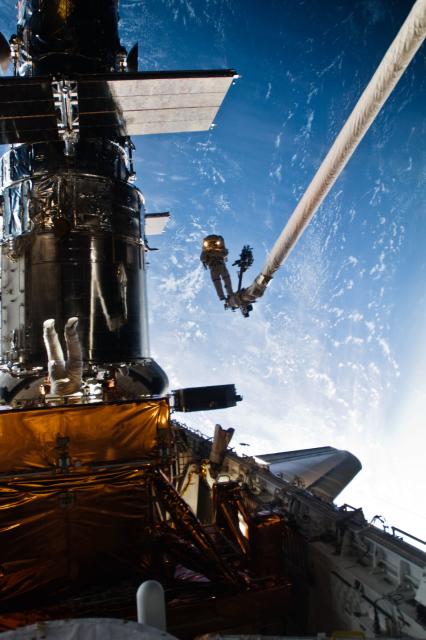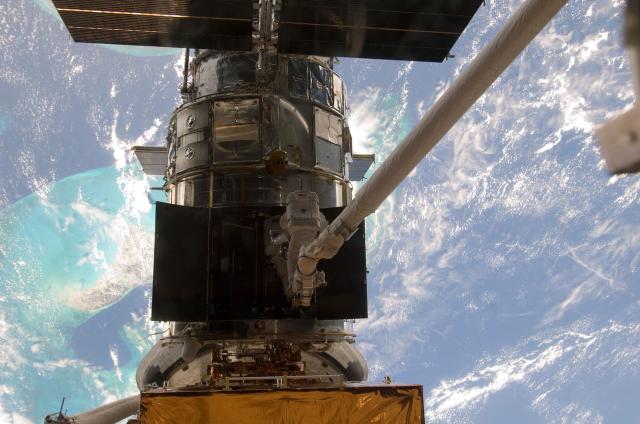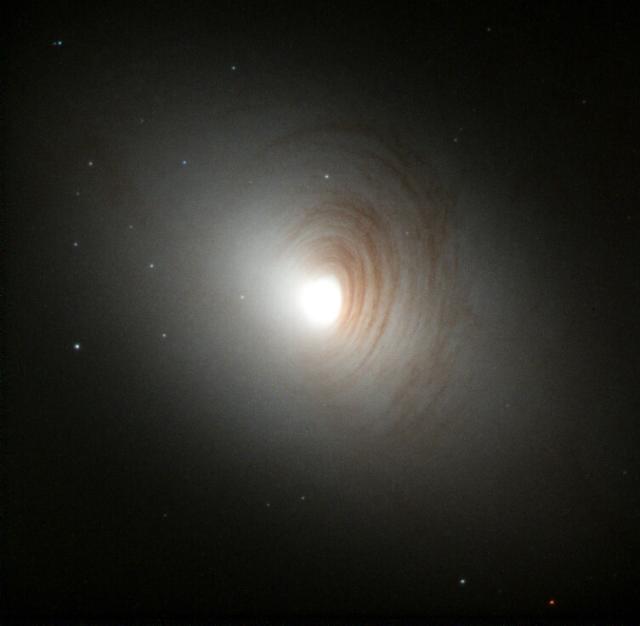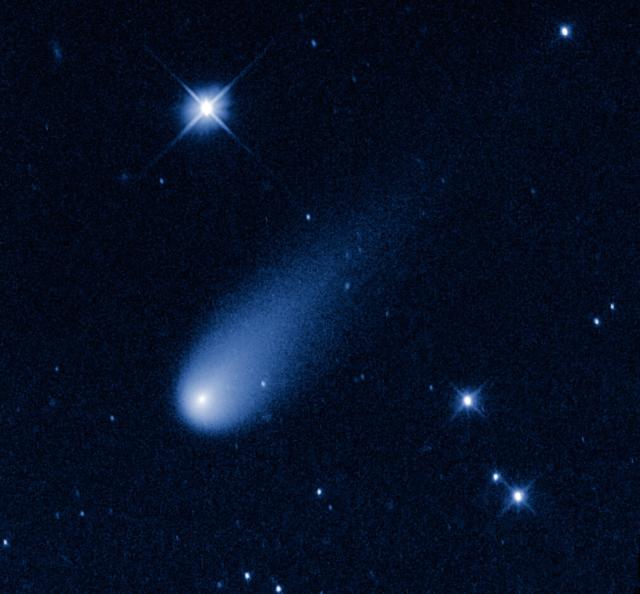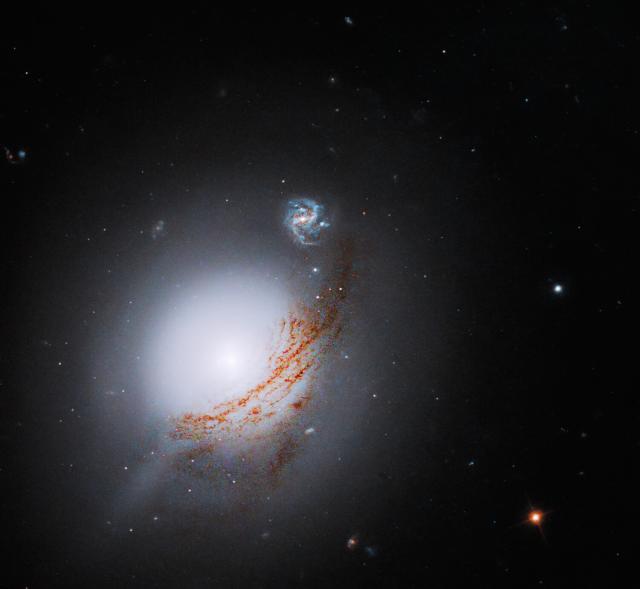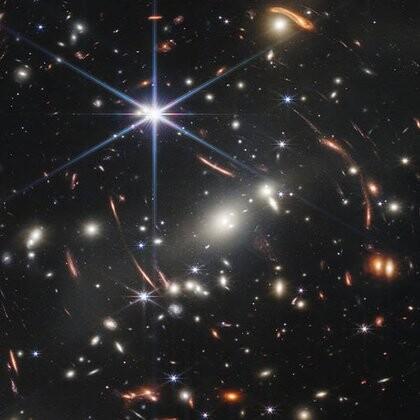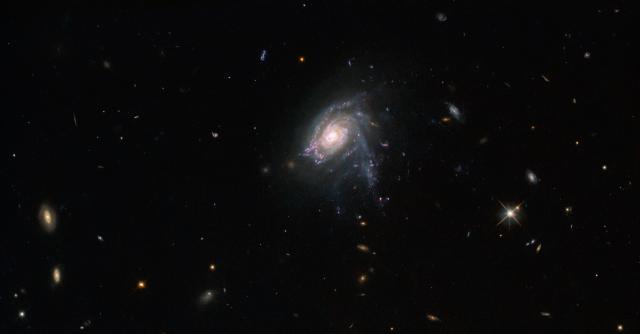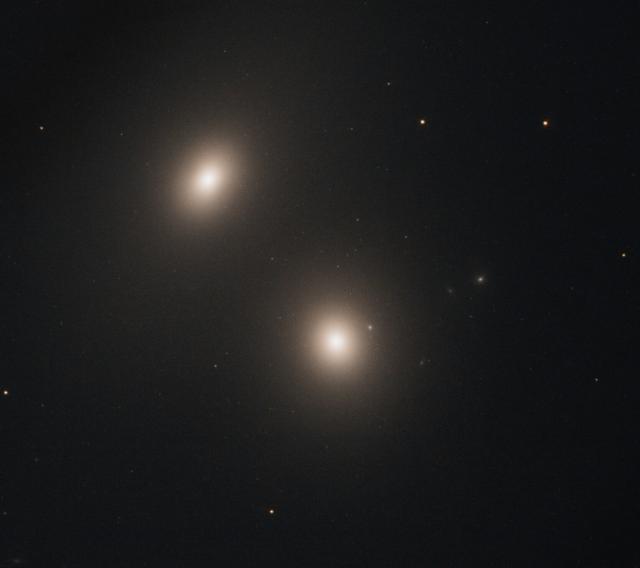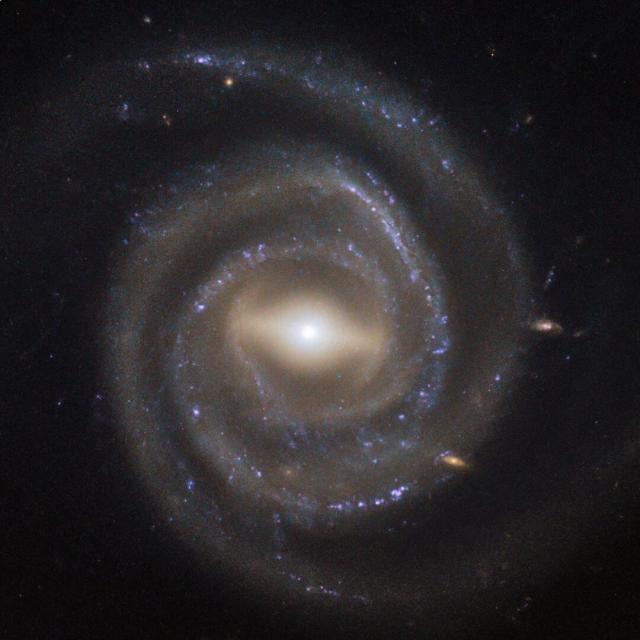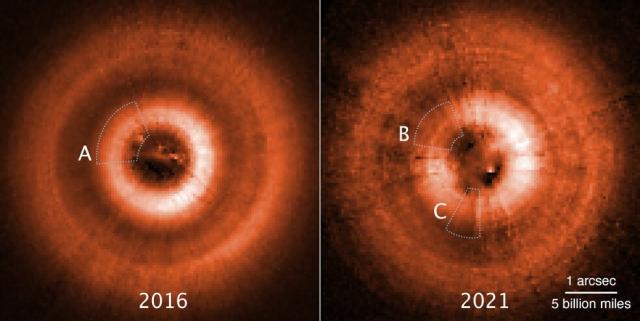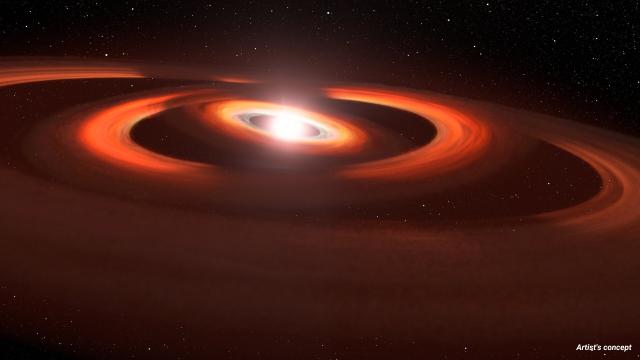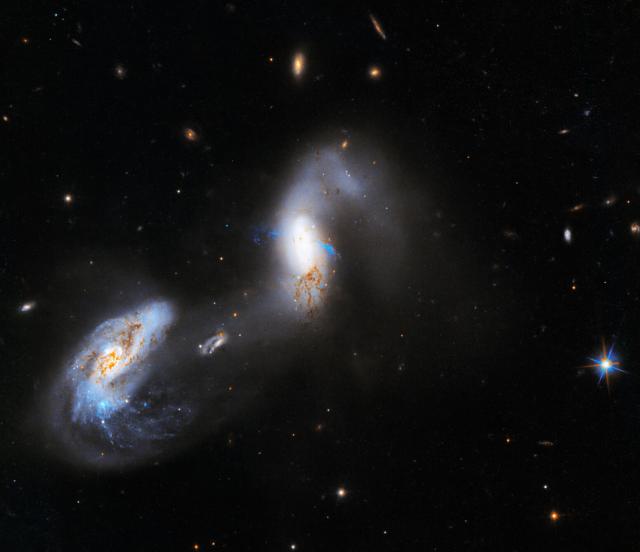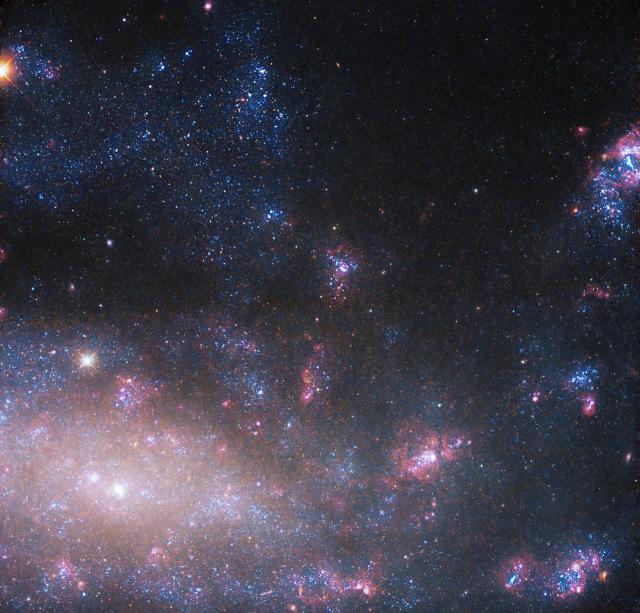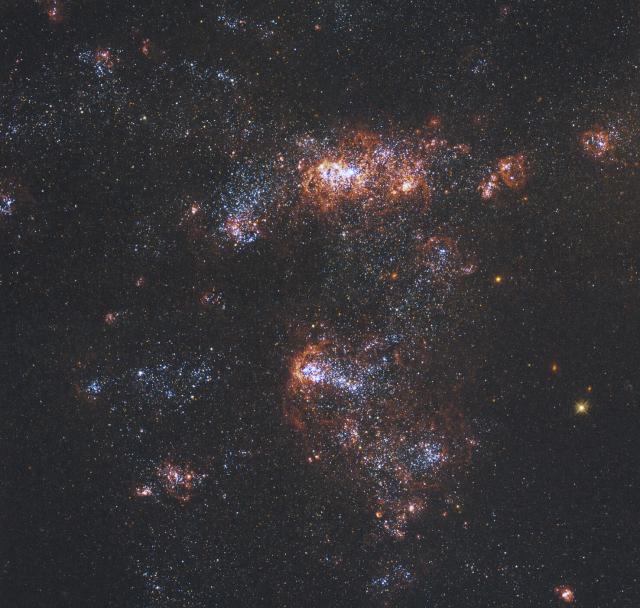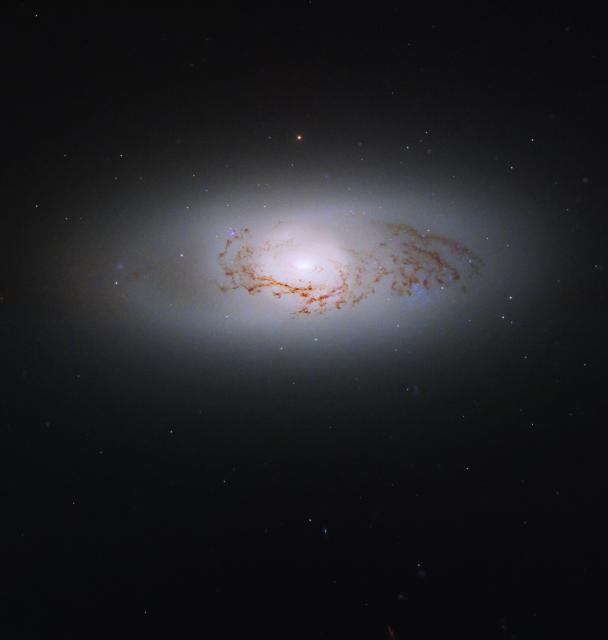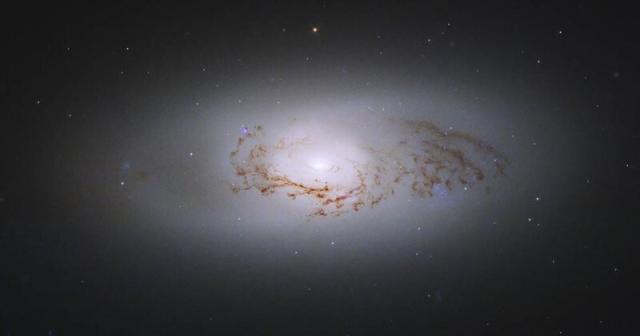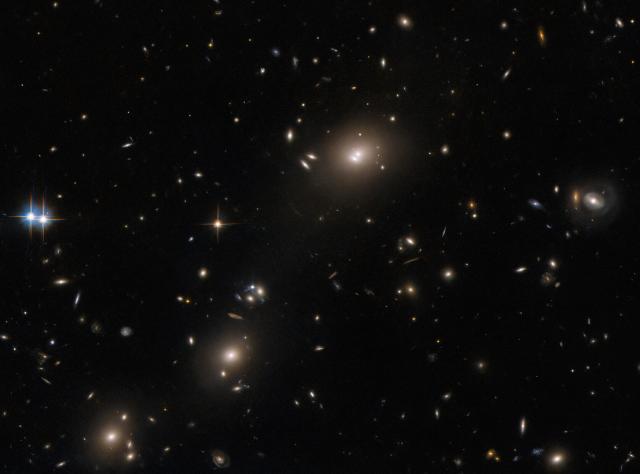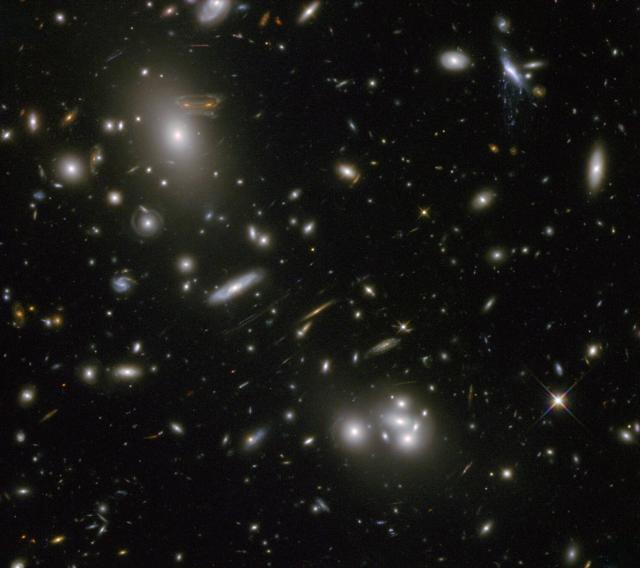Search
Items tagged with: hubble
Calling all tabletop gamers! Have you ever wondered about the “alignment” of various cosmic objects?
For #InternationalTabletopDay, we sorted some Hubble views of our universe into different alignments. ⬇️
#Hubble
Lawful: Grand design spiral galaxies
“Grand design” spirals earned their nickname because of their very well-defined, distinct spiral arms. Spiral galaxies are actively forming stars and make up a large amount of all the galaxies in our nearby universe!
#Hubble
Neutral: Lenticular Galaxies
These “in-between” galaxies have traits of both spiral and elliptical galaxies: they host a central bulge of tightly packed stars, but they lack arms. Like ellipticals, lenticulars have older stars & little star formation.
#Hubble
Chaotic: Quasars
A quasar is a beacon of intense light from the center of a distant galaxy that can outshine the entire galaxy. Powered by hungry black holes, they devour a lot of gas and dust that gets heated to high temperatures, and they unleash a torrent of radiation.
#Hubble
Hubble’s observations of Jupiter’s moon Europa revealed water vapor in its atmosphere and the possibility of water plumes erupting off its surface.
In 2024, the @EuropaClipper will take a closer look – and you can go, too! #SendYourName on the spacecraft: http://go.nasa.gov/MessageInABottle
#Hubble
Sign Your Name to Europa Clipper's Message in a Bottle
You're invited to #SendYourName to Jupiter's moon Europa by signing a poem by U.S. Poet Laureate Ada Limón that will travel aboard NASA's @EuropaClipper spacecraftNASA's Europa Clipper
You're invited to sign the poem “In Praise of Mystery: A Poem for Europa” by U.S. Poet Laureate Ada Limón.
The poem (and your name!) will travel 1.8 billion miles on Europa Clipper’s voyage to Jupiter!
#Hubble
Hello out there, M85!
At 50 million light-years away, this galaxy contains about 400 billion stars! Most of these stars are very old, but the central region is home to a batch of comparatively younger stars – just a few billion years old: https://go.nasa.gov/3OSo0Fu
#Hubble
Hubble Gazes at a Hazy Galaxy
This moody image shows a galaxy named Messier 85, captured in all its delicate, hazy glory by the NASA/ESA Hubble Space Telescope.Andrea Gianopoulos (NASA)
In a nearby galaxy, the star cluster NGC 346 shines!
Seen here by multiple observatories, including Hubble, NGC 346 resides 200,000 light-years away.
Discover more: https://go.nasa.gov/3oBgt37
#Hubble
This cluster of stars drifts along the outer halo of a neighboring galaxy, the Large Magellanic Cloud.
Known as NGC 1846, this globular cluster contains hundreds of thousands of stars held together by their mutual gravity.
Discover more: https://go.nasa.gov/3OK21QU
#Hubble
Space jellyfish! 🪼
This "jellyfish galaxy" JW39 is about 900 million light-years away. It earned this nickname because of the galaxy's trailing tendrils of star formation that stretch away from JW39's central disk.
Explore more: https://go.nasa.gov/3q1N0j2
#Hubble
Hubble Captures a Drifting Galaxy
The jellyfish galaxy JW39 hangs serenely in this image from the NASA/ESA Hubble Space Telescope.Andrea Gianopoulos (NASA)
Galactic besties!
The two galaxies in this #HubbleClassic view are gravitationally interacting with each other.
Located about 200 million light-years away, NGC 5754 is the bigger one. NGC 5752 is just below it.
Find out more: https://go.nasa.gov/3oAWH7F
#Hubble
Telescope teamwork never looked so good. 🤩
This image of the spiral galaxy M74 features visible-light data from Hubble, along with X-ray information from @ChandraXRay and infrared data from @NASAWebb.
Find more information and composite images: https://go.nasa.gov/3WvBmZW
#Hubble
Our galaxy contains millions of small black holes, and our universe is home to many supermassive black holes. But what about black holes "in between"?
Using Hubble, astronomers may have found evidence for an elusive intermediate-mass black hole: https://go.nasa.gov/3or3vVv
#Hubble
NASA's Hubble Hunts for Intermediate-Sized Black Hole Close to Home
Astronomers using Hubble have come up with what they say is some of their best evidence yet for the presence of a rare class of "intermediate-sized" black hole that may be lurking in the heart of the closest globular star cluster to Earth.Andrea Gianopoulos (NASA)
This isn't an expanding star: this is a light echo!
In this time-lapse sonification, a pulse of light from the star V838 Monocerotis gives the illusion that the surrounding dust is expanding. In reality, it's just the light from the star's flash reaching dust farther away.
#Hubble
Hubble captured the first image #OTD in 2002!
This star is 20,000 light-years away, at the outer edge of our Milky Way Galaxy. In this sonification, scientists mapped brightness to pitch and volume, and the surrounding stars are pitched to musical notes: https://go.nasa.gov/3WescRA
#Hubble
About 26,000 light-years away, the globular star cluster NGC 6325 shines in this #HubbleFriday view.
Globular clusters are tightly bound collections of stars that contain anywhere from tens of thousands to millions of members: https://go.nasa.gov/3WetrQu
#Hubble
Hubble Peers into a Glistening Star Cluster
The densely packed globular cluster NGC 6325 glistens in this image from the NASA/ESA Hubble Space Telescope.Andrea Gianopoulos (NASA)
Last night, our video “How Hubble Images Are Made” was honored at the 27th Annual Webby Awards ceremony in New York City!
Find out more about @nasa’s winning entries: https://go.nasa.gov/3MwokIb
#Hubble
Best of the Internet: NASA Wins Webby Award, 5 People’s Voice Awards
NASA has earned one Webby award and five People’s Voice awards in the 27th annual Webby Awards Competition, recognizing excellence in online communications.Dacia Massengill (NASA)
Bullseye! 🎯
The galaxy NGC 922's ring structure and distorted spiral shape were caused by a smaller galaxy plunging straight through it hundreds of millions of years ago.
Learn more about this #HubbleClassic image: https://go.nasa.gov/3o7rR6y
#Hubble
Dr. Nancy Grace Roman is often called the "Mother of Hubble". Her work at @nasa made Hubble's mission possible, and also helped pave the way for space-based telescopes like @NASAWebb and @NASARoman.
Find out more about Dr. Roman: https://go.nasa.gov/3BqscUX
#Hubble
Nancy Roman (1925-2018) | Astronomer / "Mother of Hubble" – NASA Solar System Exploration
"If you enjoy puzzles, science or engineering may be the field for you. Scientific research and engineering is a continuous series of solving puzzles."NASA Solar System Exploration
What's better than one galaxy? A whole cluster of them!
This #HubbleFriday image features a galaxy cluster about nine billion light-years away! Explore more: https://go.nasa.gov/3M5WrWi
#Hubble
Hubble Captures a Light-Bending Galaxy Cluster
A vast galaxy cluster lurks in the center of this image from the NASA/ESA Hubble Space Telescope.Andrea Gianopoulos (NASA)
Here’s some Hubble history: #OTD in 2009, the fifth servicing mission to the telescope launched!
The mission’s crew installed new scientific instruments, while also completing repairs and upgrades that made Hubble more capable than ever.
Read more: https://go.nasa.gov/3Bg3GFN
#Hubble
About - Hubble Servicing Missions | Servicing Mission 4
NASA.gov brings you the latest images, videos and news from America's space agency. Get the latest updates on NASA missions, watch NASA TV live, and learn about our quest to reveal the unknown and benefit all humankind.NASA
Tightly bound arms of dust encircle the bright center of galaxy NGC 2787.
Located about 24 million light-years away, this #HubbleClassic view resides in the constellation Ursa Major.
Read more: https://go.nasa.gov/3B8LhuF
#Hubble
#OTD 10 years ago, Hubble snapped this shot of Comet ISON!
At the time, the comet was about 403 million miles from Earth – between the orbits of Mars and Jupiter.
Comet ISON hurtled toward our Sun at 48,000 miles per hour (~77,000 km/hr): https://go.nasa.gov/41iezlb
#Hubble
To wrap up #BlackHoleWeek, here’s a parting gift – a new Hubble image of the galaxy NGC 5283!
Matter falling into a supermassive black hole creates the bright glow at the galaxy’s heart.
Learn more: https://go.nasa.gov/44y4C5N
#Hubble
Hubble Views a Beautiful Luminous Galaxy
The lenticular galaxy NGC 5283 is the subject of this NASA Hubble Space Telescope image.Andrea Gianopoulos (NASA)
https://go.nasa.gov/42ujyA6
#Hubble
The Big Event, 2023 | Participate – NASA Universe Exploration
NASA's home for exploring everything beyond our solar system. Scientists use our fleet of telescopes to help us understand objects from our nearest neighbor stars, to monster black holes and distant galaxies.NASA Universe Exploration
650 million light-years away, the galaxy JO175 shines in this #HubbleFriday view!
JO175 is classified as a "jellyfish galaxy" due to the tendrils of star-forming gas and dust that trail behind it.
Find out more: https://go.nasa.gov/3pfV9zT
#Hubble
Hubble Views Striking Starry Tendrils
The jellyfish galaxy JO175 appears to hang suspended in this image from the NASA/ESA Hubble Space Telescope.Andrea Gianopoulos (NASA)
These two bright spots are collectively known as Arp 308.
Sitting just below the center of this image is NGC 547, an elliptical galaxy in the constellation Cetus. Its companion galaxy, NGC 545, is in the upper left. Find out more: https://go.nasa.gov/3Ny07lU
#Hubble
Hubble Spots an Energetic Galaxy
This NASA Hubble Space Telescope image reveals NGC 547, an elliptical galaxy that sits about 250 million light-years away from Earth in the constellation Cetus.Andrea Gianopoulos (NASA)
#MayTheFourth be with you... especially if you come across a TIE fighter in the stars!
The galaxy UGC 6093 might look like right out of Star Wars, but it's just a barred spiral galaxy – meaning that it has a bar-shaped structure of stars in its center: https://go.nasa.gov/3oZns5C
#Hubble
The potential planets around TW Hydrae are, comparatively, located about the distance that Jupiter is from our Sun.
The shadows complete one rotation around the star about every 15 years – the orbital period that would be expected at that distance from the star.
#Hubble
Cosmic construction zone 🚧
Misaligned gas-and-dust disks around the young star TW Hydrae are likely caused by the gravitational pull of two developing planets in slightly different orbital planes.
Hubble observed shadows cast on the disks as a result: https://go.nasa.gov/3AQElSV
#Hubble
Hubble Follows Shadow Play Around Planet-Forming Disk
The young star TW Hydrae is playing "shadow puppets" with scientists observing it with NASA's Hubble Space Telescope.Andrea Gianopoulos (NASA)
Interacting galaxies, known as AM 1214-255, shine bright in this new view from Hubble!
Both galaxies contain active galactic nuclei, which are luminous central regions that host a black hole. Learn more for #BlackHoleWeek: https://go.nasa.gov/3VoUSa9
#Hubble
Hubble Captures Extraordinarily Bright Interacting Galaxies
This new image from NASA’s Hubble Space Telescope shows interacting galaxies known as AM 1214-255.Andrea Gianopoulos (NASA)
Next up for #BlackHoleWeek, meet NGC 4395!
About 14 million light-years away, this spiral galaxy contains an active galactic nucleus (AGN) powered by a supermassive black hole.
Find out more about this new Hubble view: https://go.nasa.gov/3Nzydpw
#Hubble
Hubble Gazes at the Home of an Enormous Black Hole
This NASA Hubble Space Telescope image of the spiral galaxy NGC 4395 looks at a small section of the larger galaxy.Andrea Gianopoulos (NASA)
The galactic nucleus in NGC 4395 has a comparably low luminosity to other AGNs and its black hole is about 10,000 times the mass of our Sun!
This new Hubble image of NGC 4395 captures one of the galaxy's spiral arms.
#Hubble
Welcome to #BlackHoleWeek!
To celebrate, Hubble has new images to share featuring active galactic nuclei, or AGNs. Some galaxies contain AGNs, which are extremely bright central regions that host a supermassive black hole!
First up, feast your eyes on NGC 3489 ⬇️
#Hubble
NGC 3489 is home to a huge black hole. The luminous center is caused when the black hole devours material that gets too close to it!
This galaxy resides about 30 million light-years away: https://go.nasa.gov/429QWMs
Stay tuned for more new images of AGNs this week!
#Hubble
Hubble Observes an In-between Galaxy
NASA’s Hubble Space Telescope captured this image of the lenticular galaxy NGC 3489.Andrea Gianopoulos (NASA)
Galaxy clusters are among the largest objects in the universe!
Studying them helps us learn more about the distribution of mysterious dark matter, which makes up most of a galaxy cluster's mass.
This #HubbleFriday view shows galaxy cluster ACO S520: https://go.nasa.gov/3LCZyFZ
#Hubble
Hubble Captures an Elusive Galaxy Cluster
A menagerie of interesting astronomical finds are visible in this image from the NASA/ESA Hubble Space Telescope.Andrea Gianopoulos (NASA)
Yesterday, @NASAGoddard welcomed @President_KR Yoon Suk Yeol and @VP Kamala Harris.
The visit included a meeting with Korean-American @nasa employees, like Hubble engineer Jessica Regalado (second from right in group photo from the event): https://go.nasa.gov/3AwwQQJ
#Hubble
VP Harris, South Korea President Yoon Visit NASA Goddard
Vice President Kamala Harris and Republic of Korea (ROK) President Yoon Suk Yeol saw firsthand how NASA studies climate change during a visit to NASA’s Goddard Space Flight Center in Greenbelt, Maryland, this afternoon.Rob Garner (NASA)
About two billion light-years away, a whole cluster of galaxies known as Abell 68 shines.
The massive gravitational field of Abell 68 is strong enough to bend the light paths of more distant galaxies, causing the warped shapes of some galaxies seen here: https://go.nasa.gov/442N3e1
#Hubble
The Hubble team is thrilled to share that our video “How Hubble Images Are Made” is @nasa’s 2023 Webby-award-winning entry! 🎉
In addition, five other NASA projects received the honor of winning People’s Voice Awards: https://www.nasa.gov/feature/best-of-the-internet-nasa-wins-webby-award-5-people-s-voice-awards-for-2023
#Hubble
Best of the Internet: NASA Wins Webby Award, 5 People’s Voice Awards
NASA has earned one Webby award and five People’s Voice awards in the 27th annual Webby Awards Competition, recognizing excellence in online communications.Dacia Massengill (NASA)
